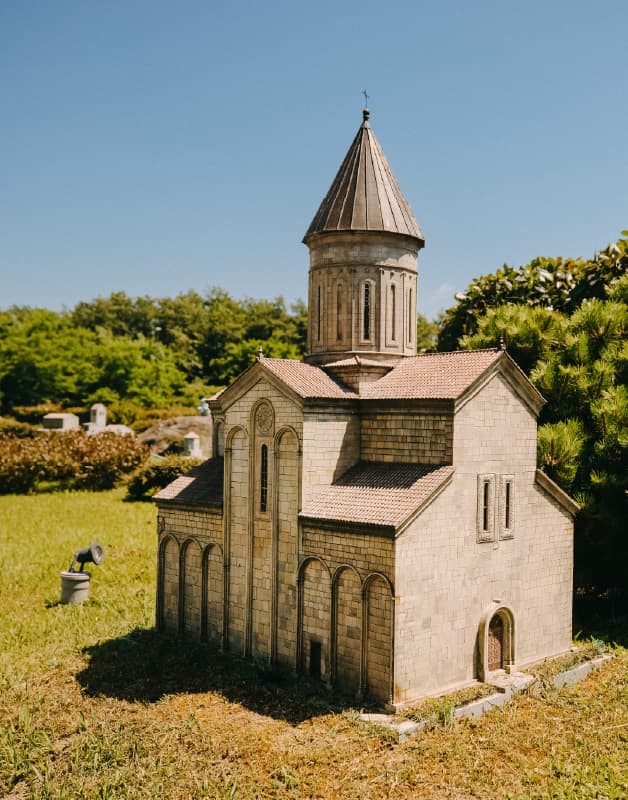სამთავისის ტაძარი

სამთავისი შუა საუკუნეების ქართული მართლმადიდებლური ჯვარგუმბათოვანი ტაძარია, რომელიც კასპის მუნიციპალიტეტის სოფელ სამთავისში მდებარეობს. გადმოცემის თანახმად, პირველი ტაძარი (ბაზილიკა) აქ ვახტანგ გორგასალს აუგია V საუკუნეში, ახლანდელი ტაძარი კი, 1030 წლით თარიღდება. ტაძარს ახასიათებს ისეთი არქიტექტურული თავისებურებები, რომლებიც საფუძვლად დაედო ქართულ ხუროთმოძღვრების შემდგომ განვითარებას.
The original church at Samtavisi was built in 472, but no remains of that structure have survived. Much later, in 1030, the bishop of Samtavisi, Ilarion Kanchaveli, constructed the current church. He also built a wine cellar (marani) and a wine press for the cathedral in 1050. In addition to 11th-century inscriptions, the church’s façades preserve somewhat later epigraphic monuments that provide valuable information about its history.
Did you know that...
1. According to the chronicles, from the second half of the 12th century to the early 13th century, Samtavisi belonged first to Michael, the Catholicos of Kartli, and later became the domain of Anton, the archdeacon and bishop. From the first half of the 14th century, during the reign of King George V the Brilliant, Samtavisi was granted to the Zedginidze-Amilakhvari family.
2. In the 15th century, the monument was severely damaged: the dome, western entrance, arches, drum pillars, and the entire façade collapsed. At the end of the 15th century and the beginning of the 16th century, following the rise of the local feudal lords, the Amilakhvaris, it became possible to rebuild and restore the church.
3. Inscriptions preserved on the conch of the apse and on the eastern pillars beneath the dome recount the story of the church’s fresco restoration and repainting. According to these inscriptions, the patrons of the frescoes were Givi Amilakhvari and his wife Tamari, and the artist who executed the work was Meliton Samtavnelis. These works were completed in 1679.
4. Restoration work was carried out on the monument in 1847.
5. The church originally had three entrances, but today only two remain. The third entrance was sealed off during 19th-century repairs.
